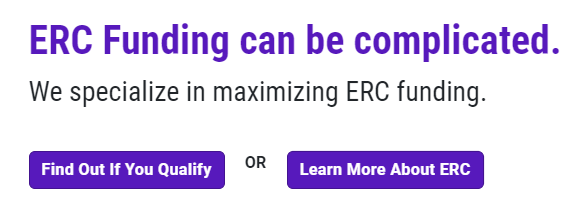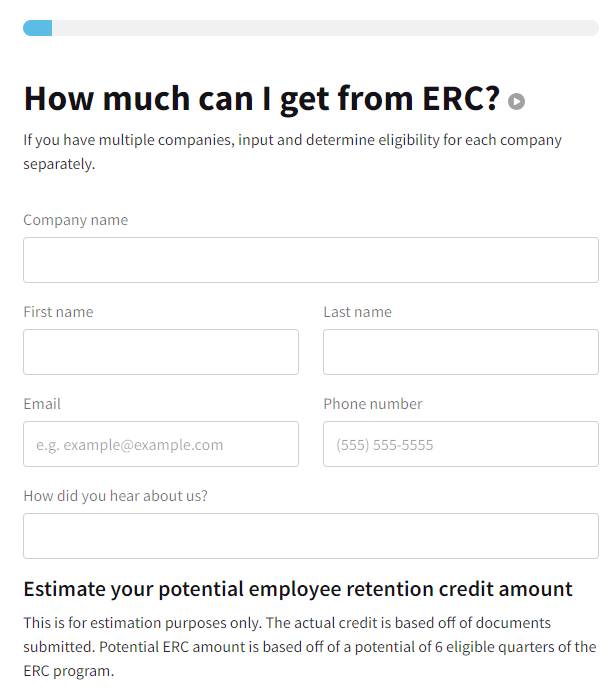You’re tackling the ERC maze, and it’s time to demystify ‘ERC Partial Shutdown’.
As a business owner, understanding this can seem like a puzzle. Don’t worry, we’ve got you covered. This article will clarify eligibility criteria, debunk misconceptions, and shed light on the IRS’s stance on supplier-related shutdowns.
You’ll learn how to assert your claim confidently. Let’s navigate this together and ensure you reap the maximum benefits from the ERC.
What is a partial government shutdown and how does it affect ERC eligibility?
A partial government shutdown can disrupt your business, but it may affect your eligibility for the Employee Retention Credit (ERC).
The term ‘partial shutdown’ often refers to a decrease in operations due to government-imposed restrictions.
Understanding what qualifies as a partial shutdown and how it impacts your business is critical in assessing your eligibility for the ERC.

What qualifies as a “partial shutdown”?
Understanding what qualifies as a ‘partial shutdown’ is crucial for your ERC eligibility.
A partial shutdown occurs when your ability to render services at full capacity is limited, which might happen due to a range of reasons. It could be due to governmental orders limiting commerce, travel, or group meetings due to COVID-19.
The IRS has stipulated that any business experiencing such limitations qualifies for the ERC. It’s noteworthy that this partial shutdown qualification is just one of the three qualifications.
The key here is to understand the specific limitations your business is facing and how they impact your operations. Moreover, you should be able to clearly illustrate these impacts for your ERC eligibility application.
How does it apply to you and your business?
Determining how a partial government shutdown applies to your business and impacts your ERC eligibility involves a deep dive into the specifics of your operations and the extent of restrictions imposed on it.
For instance, if you run a church that provided essential services during the pandemic, but were ordered to limit capacity to 50% of your facilities, you might meet the partial shutdown criteria.
Similarly, operating a construction company with crew limitations on job sites could qualify.
It’s crucial to understand the nuances of the partial shutdown test and its potential financial implications for your business.
What is the ERC nominal effect?
In your quest to grasp the ERC’s intricacies, it’s crucial to comprehend the concept of the ‘nominal effect’. This term is used to indicate when a business has experienced a significant impact, defined as more than a 10% effect on either sales or hours of operation for a particular part of the business.
Understanding the nominal effect is pivotal because it determines if your business qualifies under the ‘partial shutdown’ criteria for the Employee Retention Credit (ERC).
The nominal effect can be established in two main ways according to the IRS Notice 2021-20 Subsection C:
- If the gross receipts generated by a specific part of your business equal or exceed 10% of the total gross receipts, based on the gross receipts of the corresponding calendar quarter in 2019.
- If the hours worked by employees in a particular area of your business constitute 10% or more of the total hours worked by all employees, considering the hours of service performed in the corresponding calendar quarter of 2019.
Both scenarios highlight the significance of the affected part of your business in relation to the whole.
Therefore, if your business has been partially shut down due to COVID-19 and the impacted area has had a nominal effect, you could potentially be eligible for the ERC. It’s important to carefully analyze the extent of the impact on your business to determine your eligibility accurately.

ERC Government Shutdown Tests
Consider the challenges your business may have faced during the ERC government shutdown tests.
If your business was essential, yet operations were impacted due to supplier shutdowns, or if you were required to reduce operating hours due to a governmental order, you’re in the right place.
Additionally, if your business operated across multiple jurisdictions with varying degrees of shutdowns, we’ll analyze how this could potentially affect your ERC status.
Your business was essential but supplier shutdowns impacted operations
Even though your business was deemed essential during the pandemic, if your suppliers had to halt their operations due to a governmental order, you might’ve faced what’s known as a partial shutdown. This could have had significant implications on your operations and revenue stream.
In these scenarios, it’s crucial to:
- Document any supply chain disruptions thoroughly.
- Assess the impact of these disruptions on your operations.
- Understand how these impacts could potentially qualify you for relief under partial suspension.
Technically, you may qualify for Employee Retention Credit (ERC) if you can demonstrate that your operations were directly affected by supplier shutdowns. Deciphering these rules can be a complex process, but it’s vital to explore all avenues for potential relief.
Your business was required to reduce operating hours due to a governmental order
Facing a governmental order that required you to reduce your business’s operating hours, you’ve essentially experienced a partial shutdown. This scenario falls under the ERC’s partial suspension test.
The test recognizes that not all businesses were fully shut down due to governmental orders; some could continue operations remotely or on a reduced scale. Your business, for example, may have had staff working remotely, but other in-person operations were halted. Or perhaps, if you’re a restaurant owner, you’d to switch from dine-in services to carry-out and delivery.
Even though you’ve had to adapt, these changes still represent a reduction in your usual operations, and thus, qualify as a partial shutdown under the ERC guidelines.
Your business operated in multiple jurisdictions with varying degrees of shutdowns based on location
Often, you might find that your business operates in multiple jurisdictions, each with its own unique set of shutdown rules during the pandemic. This can be challenging as you navigate the varying degrees of shutdowns and their impact on your operations.
According to the IRS, even if your business was operating in different locations with distinct guidelines, you could still be considered under a partial shutdown. This is particularly true if:
- Some locales had stricter shutdown rules than others
- Your business operations were affected differently in each jurisdiction
- The shutdowns led to significant changes in your overall operations
It’s crucial to meticulously note all states and locales where you operated to ensure an accurate understanding of your business’s standing during these shutdown tests.
Shutdown Impact
You’re now at the stage where you must consider the impact of the shutdown on your business.
The two main factors to evaluate are the Size Test and the Effect Test.
It’s crucial to understand these tests in detail, as they’ll significantly influence your eligibility for the Employee Retention Credit.
The Size Test
While you’re considering your eligibility for the Employee Retention Credit (ERC), it’s crucial to understand that the size test comes into play if more than a nominal portion of your operations were suspended due to a government order. This test is an integral part of the ERC qualification process. It gauges the impact of the shutdown on your business operations.
The size test measures the suspension of operations in two ways:
- A reduction greater than 10% of the total gross receipts for the specific quarter year over year.
- A decrease more than 10% in total employee service hours for the same quarter year over year.
Understanding and passing this size test is key to qualifying for the ERC.
The Effect Test
If your business had to significantly alter its operations due to a governmental order, you’ve likely felt the impact, and this is where the effect test comes into play.
This test is crucial in determining your eligibility for the Employee Retention Credit (ERC) after a partial or full shutdown.
To meet the effect test, you need to demonstrate that the suspended portion of your business constituted more than 10% of total operations or that governmental order-induced modifications resulted in over a 10% impact on your ability to serve customers.
For instance, if a restaurant had to limit occupancy to 50%, or a dance studio could only offer one-on-one classes, both would pass the effect test.
Conclusion
In wrapping up, understanding the ERC Partial Shutdown is paramount as a business owner impacted by COVID-19. You’ve now gained insights into eligibility criteria, shutdown tests, and common misconceptions.
You’re more aware of the IRS’s stance on supplier-related shutdowns and how they could impact your claim. Harness this knowledge to assert your eligibility confidently and maximize your business’s benefits.
Remember, every little bit of aid counts in times like these.
